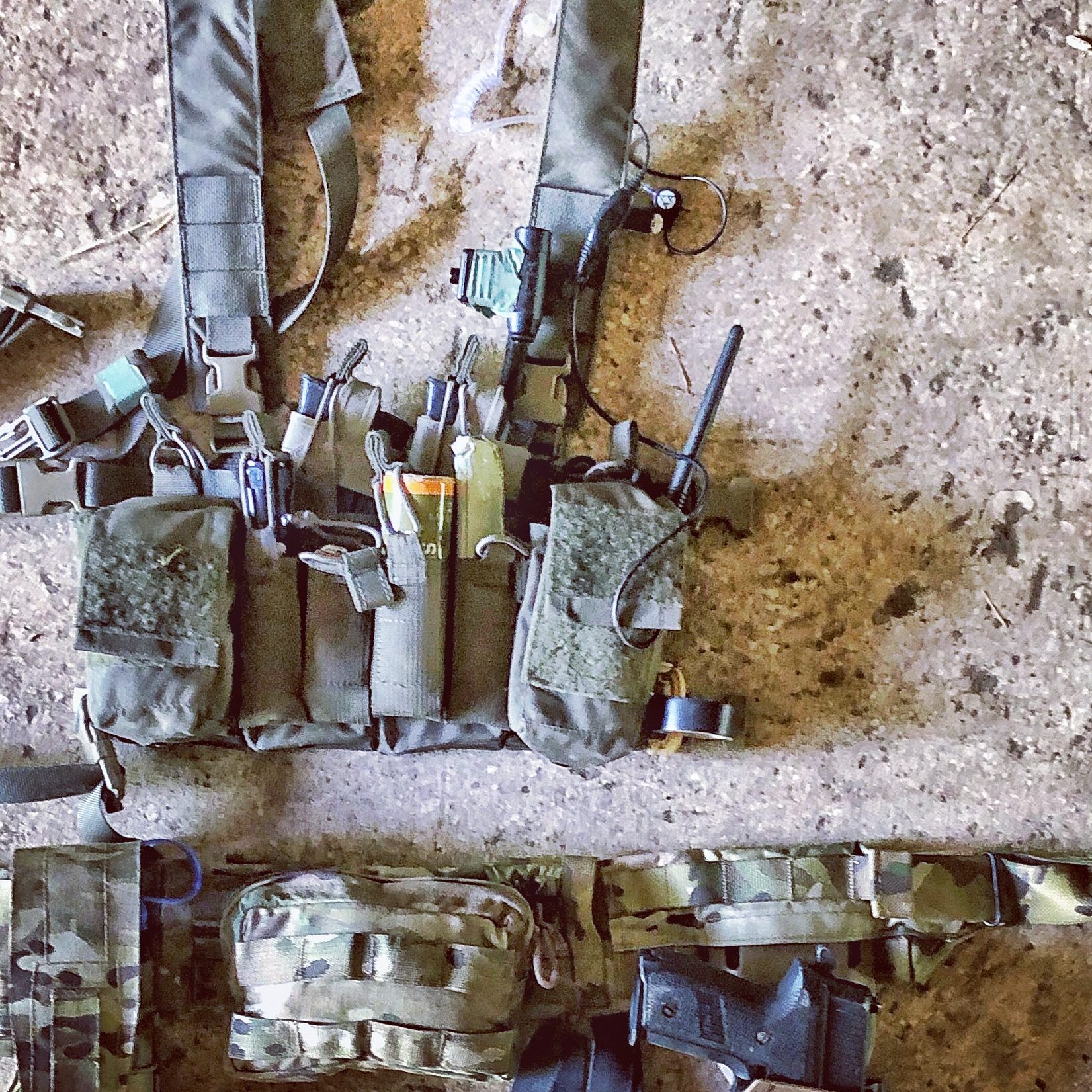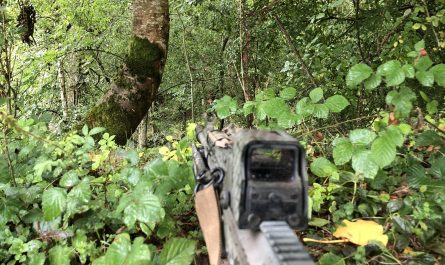There’s a(nother) military cliche that if you’re not shooting, you should be communicating. Like most cliches, it’s absolutely true. Decent comms kit combined with the ability to use it really does makes a difference. Fancy comms have always been something of a dark art for me: reserved for people who can know their VHF from their CTCSS and who can tell you how long your antennae should be. It turns out that, for the most part, it’s actually quite accessible. On the basis that if you can get your comms right, you will have more fun, it’s well worth getting your head around it.

I’ll focus on the kit in this article but don’t under-estimate the skills and knowledge you need to use it properly. You’ll need to know how to drive your kit – things like setting CTSS codes and off-sets on the fly – as well as voice procedure: more on this later.
The Beginning
For years, Motorola walkie talkies were the only wireless comms I had. Then came mobile phones (yes, I’m that old) and then, after getting back into airsoft in 2016, along came licensed radios. First came the Baofengs, and after that, TCA 152s.
The second half of my airsoft hobby properly began in early 2016 when I rocked up to my first milsim event for years . It was a Stirling game at Catterick. I had two problems at that event: firstly, the springs in all my mags had died and only fed the first 5-10 bbs for each one. This turned out to be a real problem! The other issue was that everyone had moved away from PMR446 radios. Luckily, I was tagged onto a team who were willing to share both mags and comms and I had a great time.
After this event (and having replaced all my mags), I spent the best forty-odd quid of my airsoft career and bought a Baofeng UV-5R radio, a simple earpiece and the relevant OFCOM license. I think it’s such good value because it opens up a huge amount of team work and general fun, especially for bigger and more complex games. Since then I’ve acquired a range of comms kit to allow me to select what I want and what will work best for a given situation and have learnt not to fear it too much.
Comms and Hearing Protection – you need to think about both
One of the places all this gets complicated is if you add in hearing protection. Hearing doesn’t grow back and airsoft often involves big bangs. For this reason, I almost always wear hearing protection, either Peltor ComTac XPIs or Invisio X5s. Now, these are pricey but hearing doesn’t grow back and I don’t want my hobby to leave me with tinnitus. I have a small amount of hearing damage from real shooting and a couple of big bangs already and I don’t want to add to this. I thoroughly endorse buying proper, legit active hearing protection rather than another gun.
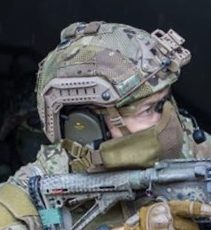
Dual Comms
If you really get into the comms or if your team mates hate you and dick you to be a radio operator, then you might need dual comms. This allows you to easily talk on at least two networks at the same time – usually a command network for the whole team and then your local team chat net. Dual comms get expensive. But it’s totally worth it for the options it gives you. Having spent lots of time on radio networks my voice procedure is decent so I’m often the RO. At the recent event I was a platoon commander with 3 sub-call signs under me. Thanks to my comms set-up, I was able to chat to Zero and other team leaders, getting orders and keeping them in the loop while also tasking each of my sections and talking to them and getting them what they needed. This was a huge part of what made us the most lethal call sign on the ground for much of the game.
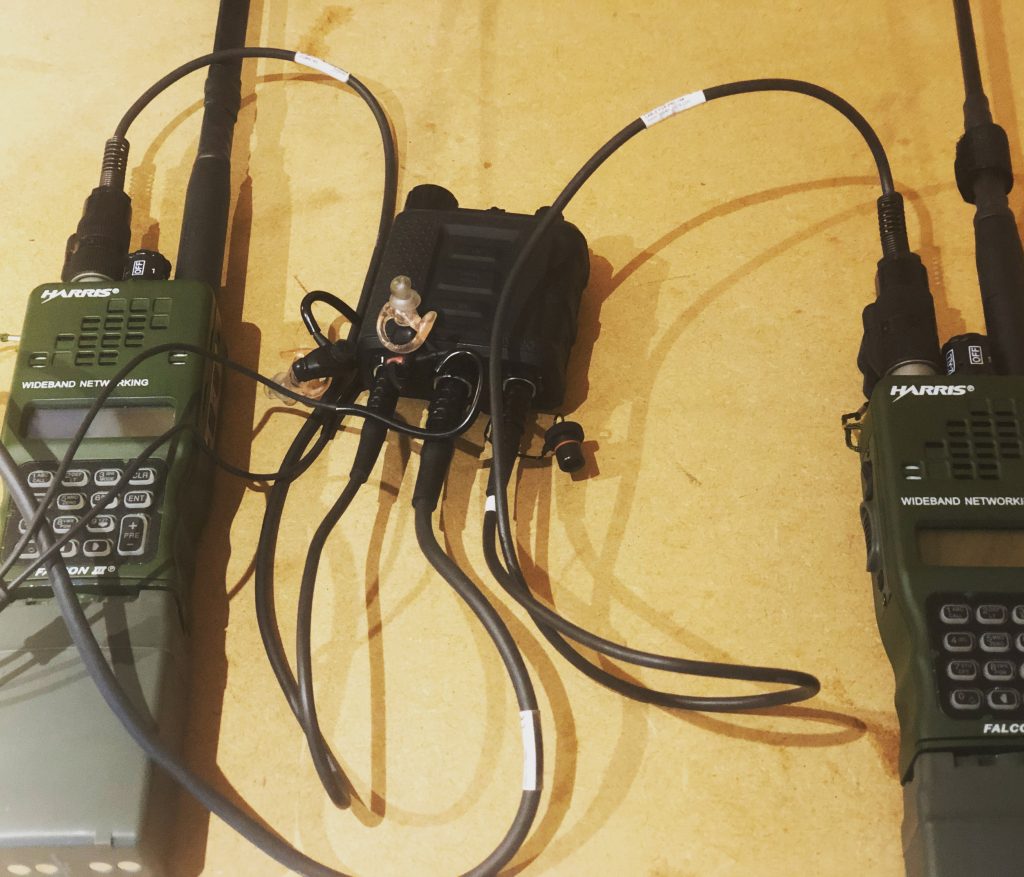
Going Shopping
So, what do you need to buy? For me, it boils down to this:
- Something to speak through – A mic
- Something to trigger the transmission – A PTT (press-to-transmit)
- Something to broadcast the transmission – A radio and an antennae
- Something to make received signals audible – An ear-piece
Before going into the shopping list, one thing to think about is the type of ear piece or headset you want to go for: in ear or over ear. In my experience, in-ear gives slightly better situation awareness but over-ear gives more protection. That’s why I wear peltors for CBQ and Invisio X5s for everything else. This does mean lots of cables so there are times that it’s lovely to just have a simple single earpiece and a first mic.
In terms of a shopping list, I’ll give you four rough options: Basic, CQB and General Use and Top End. All of these options require you to purchase a suitable license from OFCOM.
Basic
- Baofeng UV5R Radio
- Cheepo Earpiece/Mic/PTT combo
- Upgrade: Flexible, body/vest mounted antennae
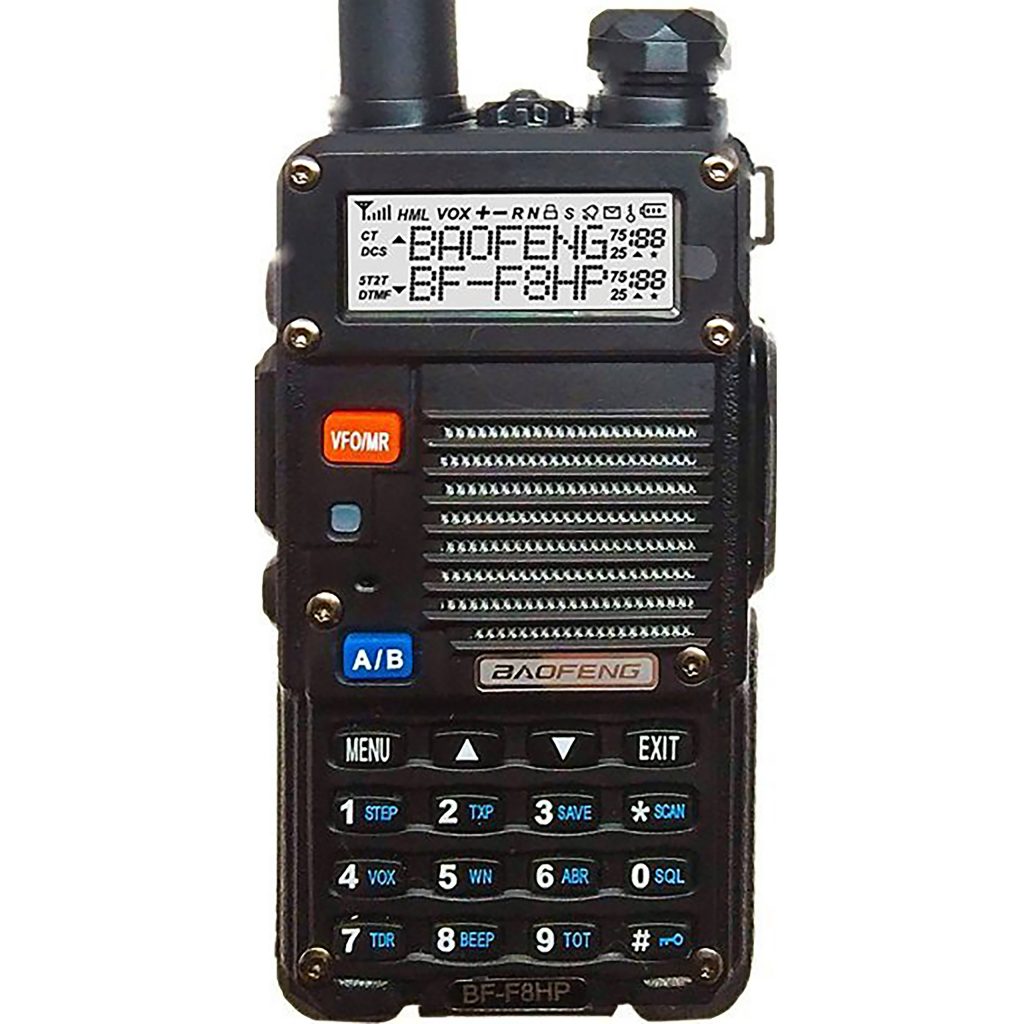
This will do you for almost everything, especially if you add in the extra antennae. What it doesn’t give you is any hearing protection. I will wear something like this for a nice, light set-up where I don’t expect bangs (eg overnight where there’s a pyro ban or on a pure recce mission). It’s light, it’s cheap, it’s simple and it’s comfortable. These are all very good things. It’s also low profile, which is handy if you’re playing a role which requires that.
CBQ
- Baofeng UV5R Radio
- Peltor Comtac Headset
- Tea U90 v2 PTT
- Flexible, body/vest mounted antennae
- Upgrade: TCA PRC 152 or 148 replica
This set-up will give you decent protection from bangs in CQB and the electronic oomph to transmit and receive through steel and concrete boxes. You get extra cool guy points and a bit more power for switching to a replica 152 but you should buy active hearing pro before a show radio.
General Use
- TCA PRC 152 replica
- Harris fist Mic
- Simple earpiece
- Flexible body worn antennae
I really like this set-up and whenever I’m sure that I won’t need hearing protection but do need the power of the 152, this is what I go for. There isn’t much to go wrong, there aren’t too many cables to snag and it tends to work nicely.
Top-End General Use
- TCA PRC 152 replica
- Invisio X50 PTT
- Invisio X5 headset
- Flexible, body mounted antenna (option of a big-ass blade antennae)
This set-up gives you hearing protection, bone conducting mics (the ear pieces have to be far enough into your ear canal that you can taste them), an unbeatable PTT and the power of the 152 with a proper antennae. This is also scalable so if you want to run dual comms, you can easily add another radio into the PTT and that’s it. This is the set-up I run to almost all events, other than pure CQB, or if I can get definitely away without hearing protection.
Final Thoughts
Hopefully something there helps you out. For all the techy stuff about amplified or non-amplified mics, where to buy etc, I’ve learnt a huge amount from the folks in the Airsoft Comms – UK Facebook Group. There are brilliant, helpful folks there although as with all groups, have a quick search before you post because some questions come up a lot.
My other point isn’t about kit but about how to use it all. Know your way around your kit and know how to work when you’re on the air. There are loads of sources to help you learn voice procedure on youtube (I talk about some here) and then the likes of Blackline Simulations run some basic courses. The ever helpful Soldiers Pocket Book has a decent chapter on signals as well which includes lots of good hints and tips as well as practical instruction on voice procedure. Don’t be that knob who can’t use their kit and who makes the net a nightmare for everyone else.
Finally – Buy decent hearing protection and integrate it with your comms kit. Like I said, I’ve suffered a small amount of hearing damage and have plenty of mates who have suffered more serious damage. J2 Assessment is: Don’t scrimp on PPE – neither sight nor hearing grows back. Oh, and comms are cool.
